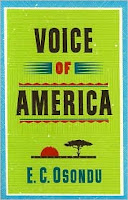The current featured contributor at
Writers Read: H. Bruce Franklin, author of
The Most Important Fish in the Sea: Menhaden and America.

His entry begins:
The future history of our species will be profoundly affected by what we do or do not do to our planet's seas. Two great and most timely books that can offer us guidance are Paul Greenberg's Four Fish: The Future of the Last Wild Food and Sylvia Earle's The World Is Blue: How Our Fate and The Ocean's Are One.
For some very different insights into...[read on]
Among the
praise for The Most Important Fish in the Sea:
"How is it possible that a sizeable fish vital to the oceanic food chain and intertwined for three centuries with the cultural histories of both natives and settlers could nevertheless completely escape the notice of most Americans and within a few short years be driven to the brink of extinction for no valid reason whatever? This well researched and vigorously written book--certain to be of wide interest to academic and general readers alike--will tell you why."
--Lawrence Buell, Harvard University, author of The Environmental Imagination and Writing for an Endangered World
"By 1880 there were almost three times more menhaden ships than whaling ships, but since then only three authors have written books about menhaden, and only Bruce Franklin has told the real story. The Most Important Fish  in the Sea is a valuable history, a desperately needed warning and a terrific read--a must for every advocate of marine ecosystems."
in the Sea is a valuable history, a desperately needed warning and a terrific read--a must for every advocate of marine ecosystems."
--Ted Williams, Conservation Editor, FlyRod&Reel magazine, Editor-at-Large, Audubon
“When I was growing up on Long Island, the Atlantic beaches were occasionally decorated with ranks of dead, smelly fish that we knew little about, except that they were ‘mossbunkers.’ I later learned that they were menhaden, but it took this marvelous book to reveal the ecological, nutritional, and economic significance of Brevoortia tyrannus. Who would have thought that the mossbunker, almost inedible because of its oily flesh, would be one of the most important components of America's commercial fisheries and the health of its coastal waters?”
--Richard Ellis, author of The Empty Ocean and Tiger Bone & Rhino Horn
H. Bruce Franklin is the author or editor of nineteen books and more than 300 articles on culture and history published in more than a hundred major magazines and newspapers, academic journals, and reference works. He has given over five hundred addresses on college campuses, on radio and TV shows, and at academic conferences, museums, and libraries, and he has participated in making four films. He has taught at Stanford University, Johns Hopkins, Wesleyan, and Yale and currently is the John Cotton Dana Professor of English and American Studies at Rutgers University in Newark.
Visit
H. Bruce Franklin's website.
Writers Read: H. Bruce Franklin.
--Marshal Zeringue










































